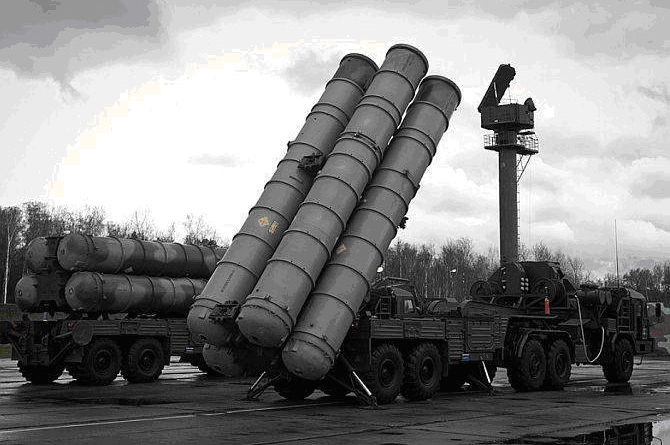Are India, China Preparing For War?
30 Sep 2020
Instead of disengagement, the Indian and Chinese armies have deployed an estimated 35,000 to 40,000 soldiers each along the LAC. The PLA has deployed S-400 air defence missiles to neutralise the IAF’s advantage in air power.
Late on September 22 evening, a full day after the conclusion of the sixth round of talks between Indian and Chinese military commanders, the two sides issued a joint statement that agreed to ‘earnestly implement the important consensus reached by the leaders of the two countries, strengthen communication on the ground, avoid misunderstandings, stop sending more troops to the frontline, refrain from unilaterally changing the situation on the ground and avoid taking any action that might complicate the situation.’
Notably, the statement made no mention of any of India’s core concerns: A troop pull-back by China and a reversion to the status quo ante of April.
Senior government sources say that, during previous talks, China’s People’s Liberation Army hardened its stance, conveying to the Indian Army that it must vacate five-six tactically dominating heights it occupied south of the Pangong Tso lake.
Only after that would the PLA consider any further withdrawal from areas that the Chinese have occupied.
On August 30, after the PLA began expanding its territorial hold south of the Pangong Tso, the Indian Army occupied ‘blocking positions’ on the Kailash Range on August 30, in its first offensive action since the PLA trespassed across the Line of Actual Control in May.
These mountaintops are strung out, north-to-south, on the Kailash Range. They include the tactically vital Point 5167, Bump, Magar Hill, Rezang La, Reching La and Mukhpari.
By occupying these features, the Indian Army can observe Chinese activities across Pangong Lake, in the Spanggur Gap and on PLA-held features such as Helmet and Black Top.
Indian control of these heights makes it difficult for the PLA to consider any westward advance into the India-held Chushul Bowl.
Indian military officers at the September 21 talks, including the outgoing commander of the Leh corps, Lieutenant General Harinder Singh, and his designated successor, Lieutenant General P G K Menon, flatly refused to withdraw from their advantageous positions, pointing out that these heights were all on territory that India had traditionally controlled and patrolled.
The Indian delegation, which also included the ministry of external affairs official in charge of the China desk, demanded the PLA withdraw from points of intrusion such as Pangong Tso, Gogra-Hot Springs and the approaches to Chushul.
It is unclear whether the Indian side has also demanded a Chinese withdrawal from Depsang, where PLA troops have penetrated about 15 kilometres into India — the deepest point of intrusion.
Given this disagreement, the PLA delegation led by the South Xinjiang Military District chief, Major General Liu Lin, declined to discuss any pull back by Chinese troops.
With that, there remains little to show for the apparent consensus between the two foreign ministers — S Jaishankar and Wang Yi — who met in Moscow on September 19.
In a five-point joint statement they agreed ‘the current situation in the border areas is not in the interests of either side’ (and) that the ‘border troops of both sides should continue their dialogue, quickly disengage, maintain proper distance and ease tensions.’
Instead of disengagement, the two sides have deployed an estimated 35,000 to 40,000 soldiers each along the LAC.
In the north, in the Depsang area, Indian planners say there are about 5,000 soldiers on the Indian side of the LAC, backed by another 5,000 on the Chinese side, equipped with tanks and air defence guns.
Over time, the PLA has built roads and tracks to supply the troops that have crossed the LAC.
To the south of Depsang, the PLA has pulled out of the Galwan River valley but remains poised on the LAC with an estimated 8,000-9,000 soldiers along India’s Patrolling Point (PP) 14, PP 15, PP-17 and PP-17A (Gogra Post).
Another 2,000-3,000 Chinese soldiers are deployed across the LAC from PP-18 to PP-23 in the Ane Le area.
South of Ane La, on the north bank of Pangong Tso, where the PLA has pushed the LAC westwards by about eight kilometres, Indian officials estimate there are about 2,500 Chinese soldiers on the north bank and another 10,000 on the south bank, facing off against Indian soldiers on the Ladakh Range.
Finally, there is a major build-up of about 250 tanks and other armoured vehicles in the Spanggur Lake area.
In a worrying development for the Indian Air Force, Indian planners are evaluating the veracity of reports that the PLA has already deployed a regiment of state-of-the-art S-400 air defence missiles opposite the Chumar area; and another regiment is being moved into the Depsang sector.
The Russian S-400 missile regiments, which can accurately strike Indian aircraft at ranges up to 400 kilometres, would allow the PLA to substantially neutralise the IAF’s advantage in air power.
The joint statement left the path for dialogue open, mentioning that the two sides agreed to hold the seventh round of military commander-level meetings as soon as possible.
No date has been fixed for the talks.
Courtesy: Ajay Shukla in Rediff.com

